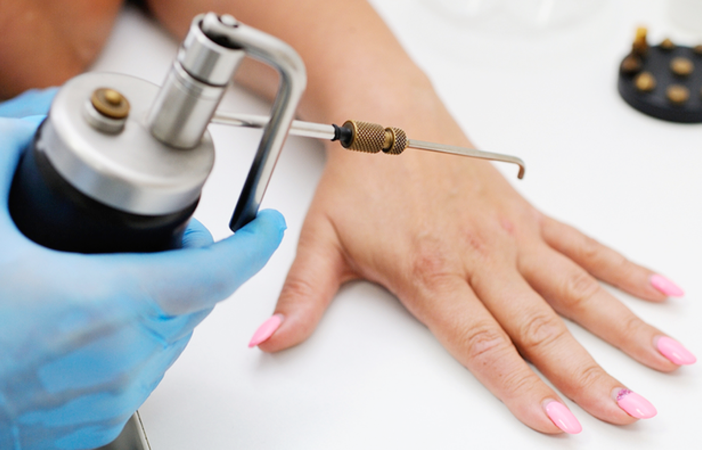 Cryotherapy uses liquid nitrogen to freeze skin lesions.
Cryotherapy uses liquid nitrogen to freeze skin lesions.
The liquid nitrogen is often applied with a "cryo gun" which sprays a thin cold mist onto the skin, resulting in a white, frost-like appearance on the surface of the skin. Cryotherapy may also be applied with a cotton-tipped swab or other methods.
The extremely cold temperature of liquid nitrogen kills the skin cells on the topmost layer . Cryotherapy may be mildly painful, particularly when applied to the face, but anesthesia is rarely if ever necessary.
A blister may form beneath the treated area, which helps to lift the lesion off the skin.
A bandage may be used to cover the blister and help prevent the area from becoming infected.
Cryotherapy is most commonly used for removing warts, seborrheic keratosis, actinic keratosis, and other benign lesions.
Some skin conditions are treated by combining cryotherapy with a medication. For instance, actinic keratoses may be treated by combining cryotherapy with a topical AK medication (5-FU, imiquimod, or diclofenac). Warts may be treated by combining cryotherapy with salicylic acid or other wart treatments.
Source: Vivacare
Last updated : 2/26/2020